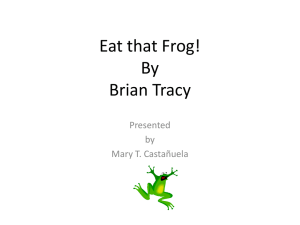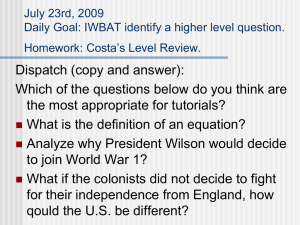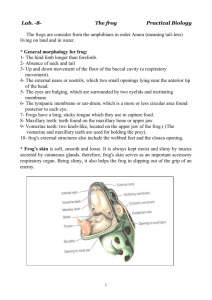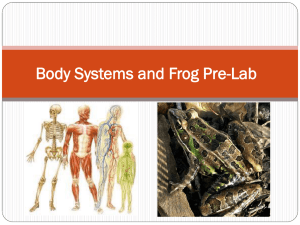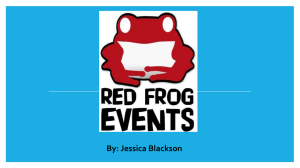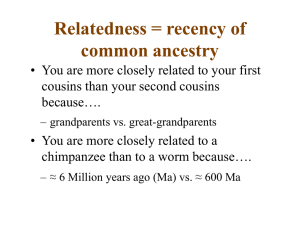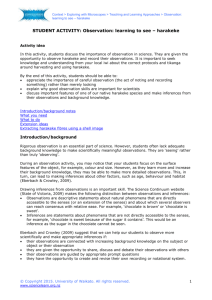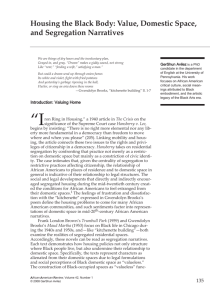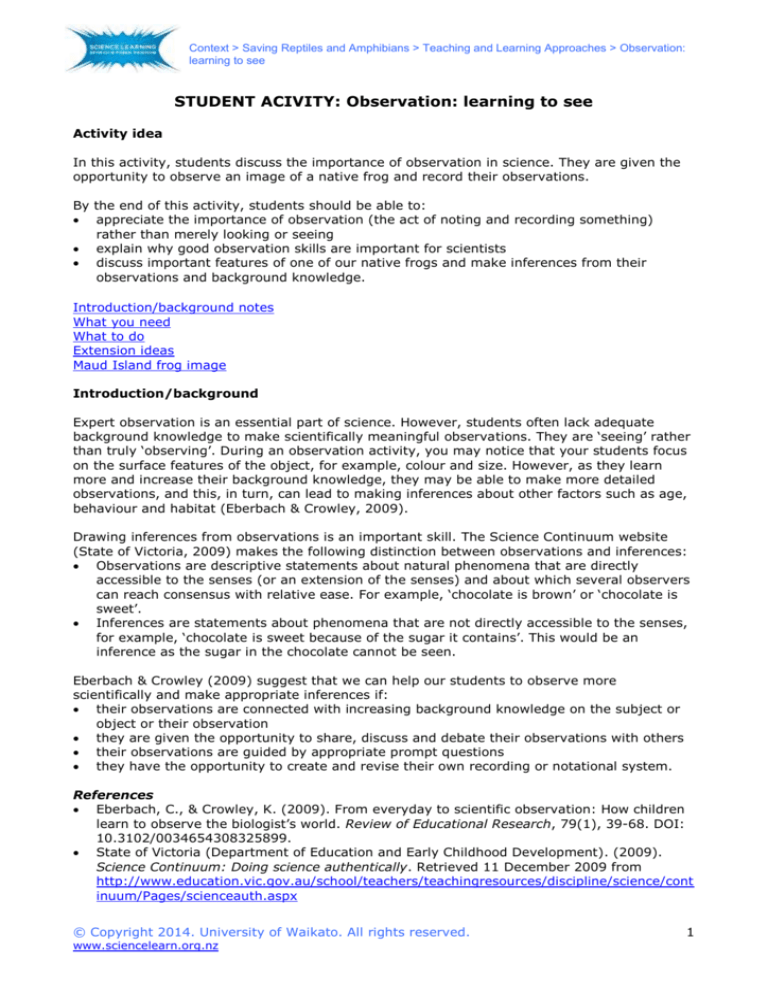
Context > Saving Reptiles and Amphibians > Teaching and Learning Approaches > Observation:
learning to see
STUDENT ACIVITY: Observation: learning to see
Activity idea
In this activity, students discuss the importance of observation in science. They are given the
opportunity to observe an image of a native frog and record their observations.
By the end of this activity, students should be able to:
appreciate the importance of observation (the act of noting and recording something)
rather than merely looking or seeing
explain why good observation skills are important for scientists
discuss important features of one of our native frogs and make inferences from their
observations and background knowledge.
Introduction/background notes
What you need
What to do
Extension ideas
Maud Island frog image
Introduction/background
Expert observation is an essential part of science. However, students often lack adequate
background knowledge to make scientifically meaningful observations. They are ‘seeing’ rather
than truly ‘observing’. During an observation activity, you may notice that your students focus
on the surface features of the object, for example, colour and size. However, as they learn
more and increase their background knowledge, they may be able to make more detailed
observations, and this, in turn, can lead to making inferences about other factors such as age,
behaviour and habitat (Eberbach & Crowley, 2009).
Drawing inferences from observations is an important skill. The Science Continuum website
(State of Victoria, 2009) makes the following distinction between observations and inferences:
Observations are descriptive statements about natural phenomena that are directly
accessible to the senses (or an extension of the senses) and about which several observers
can reach consensus with relative ease. For example, ‘chocolate is brown’ or ‘chocolate is
sweet’.
Inferences are statements about phenomena that are not directly accessible to the senses,
for example, ‘chocolate is sweet because of the sugar it contains’. This would be an
inference as the sugar in the chocolate cannot be seen.
Eberbach & Crowley (2009) suggest that we can help our students to observe more
scientifically and make appropriate inferences if:
their observations are connected with increasing background knowledge on the subject or
object or their observation
they are given the opportunity to share, discuss and debate their observations with others
their observations are guided by appropriate prompt questions
they have the opportunity to create and revise their own recording or notational system.
References
Eberbach, C., & Crowley, K. (2009). From everyday to scientific observation: How children
learn to observe the biologist’s world. Review of Educational Research, 79(1), 39-68. DOI:
10.3102/0034654308325899.
State of Victoria (Department of Education and Early Childhood Development). (2009).
Science Continuum: Doing science authentically. Retrieved 11 December 2009 from
http://www.education.vic.gov.au/school/teachers/teachingresources/discipline/science/cont
inuum/Pages/scienceauth.aspx
© Copyright 2014. University of Waikato. All rights reserved.
www.sciencelearn.org.nz
1
Context > Saving Reptiles and Amphibians > Teaching and Learning Approaches > Observation:
learning to see
What you need
Maud Island frog image.
Pens/pencils and paper.
What to do
1. Show students the image of the Maud Island frog. Ask them to carefully observe the image
and make a list of their observations. Have the students feed back to the class and make a
list on the board.
2. Watch the video clip Observation in science.
What senses help to make good observations?
Why do you think observation is an important skill for scientists?
What other methods do scientists use to collect information about animals?
What is the difference between an everyday observation and a scientific observation?
How does a scientist’s background knowledge about an animal help them to make
better observations?
If appropriate for your students, discuss the difference between an observation and an
inference.
3. Give students the opportunity to research the Maud Island frog. The Unique New Zealand
interactive and Looking Closer article on native frogs could be good starting points. Feed
back to the class.
4. Give students the opportunity to look at the Maud Island frog image again and record their
observations for a 2nd time.
Did you make any new observations?
Did you change any of your initial observations?
Did your research help you to make more detailed observations? Why? Why not?
How would this activity be different if you were observing a live frog (not a photo)?
How do you think you could improve your observation skills?
Extension ideas
Discuss the importance of consistency when recording scientific observations. Observations
need to be consistent between different scientists and between multiple observations over
time. A standardised recording system is one way to achieve this. Working in pairs, ask
students to create their own recording system for observing native frogs. Using another
frog image from the Scimedia collection, give students the opportunity to make detailed
observations using their system. Feed back to the class. Students could then try using each
other’s recording systems and compare observations. Would anyone like to revise their
system? Why? Why not?
Where appropriate, carry out an observation activity using a live animal. This could be an
insect, pet or animal at a zoo. Prepare a written observation report.
Using the New Zealand Research articles and video clips within the Saving Reptiles and
Amphibians context, make a class list that shows how scientists are using observation on
their research.
© Copyright 2014. University of Waikato. All rights reserved.
www.sciencelearn.org.nz
2
Context > Saving Reptiles and Amphibians > Teaching and Learning Approaches > Observation: learning to see
Maud island frog
© Copyright 2014. University of Waikato. All rights reserved.
www.sciencelearn.org.nz
3



